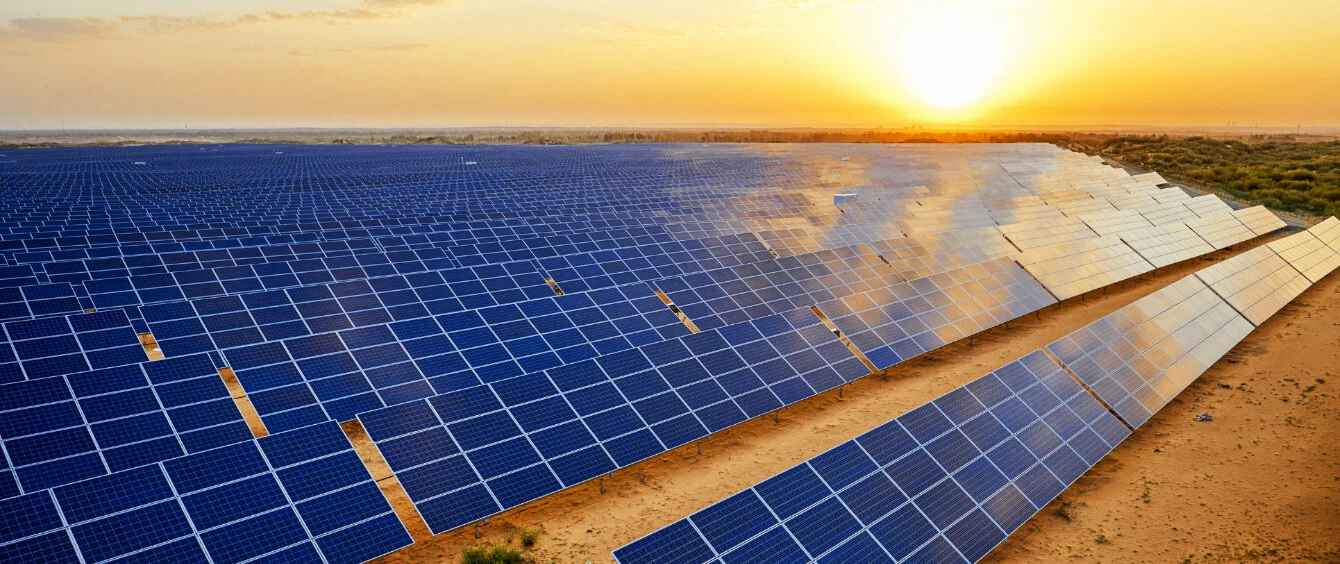Tons of sun and more than enough unused space: deserts have the best conditions for large-scale solar farms. Little wonder then that many of the world’s largest PV installations reside in dry regions – for example in China, India and North Africa – with further major projects to come. However, sand and dust quickly deposit on modules set up in these areas. To make matters worse, it hardly ever rains, enabling the formation of thick layers of dust. This phenomenon is referred to as ‘soiling,’ which causes yield to drop.
So far, plant operators have usually combatted dust with water. Pressure jet systems rinse undesired particles off the panels of several farms. However, modules are often still cleaned by hand – a mammoth effort especially when it comes to big PV systems. Cleaning can thus rapidly drive up a farm’s operating costs, with experts from the Massachusetts Institute of Technology (MIT) pegging the share of this additional outlay at up to ten percent. Moreover, in deserts, water is a scarce resource. Transporting it to remote areas is not always easy. This is why researchers the world over are seeking for innovative alternatives.
Robots are reliable solar module cleaners
A large number of projects focusses on automating cleaning with robots. For instance, India-based Solavio Labs has engineered an autonomous cleaning robot. It is fitted with soft brushes, and its sensors enable it to move along the modules independently. The robot is so light that it does not damage the modules. Jordan-based Darbco has built a similar robot, which takes a slightly different approach: The panels are sprayed with a mist of water before being brushed and dried. The manufacturer claims 80 percent water savings compared to manual cleaning.
However, this method has one shortcoming: Most robots can move along the panels autonomously but cannot switch between them. Scientists at the Fraunhofer Institute of Production Technology and Automation (IPA) argue that (Link in German) in many situations, costs currently prohibit deploying a robot for every module. They claim that a technique enabling simple translation from one row of modules to the next must be invented in order for cleaning robots to become economically viable in all scenarios.
Drones navigate entire solar farms autonomously
Israeli supplier Solar Drone and Airobotics may have come up with a solution courtesy of its futuristic cleaning drones. The quadcopters fly from a charging station to soiled solar cells. On arrival, they scan the surroundings and orientate themselves using a laser-based light detection and ranging system known as LIDAR to spray a cleaning fluid. On returning to the base, their fluid tanks are refilled, and their batteries are recharged. The companies claim that this cleaning method enables up to 25 percent in cost savings compared to other techniques.
Solar Drone Introduction
The approach taken by Dutch company Kipp & Zonen starts earlier. Its soiling detector called DustIQ is equipped with an optical sensor, enabling it to determine the degree of soiling of a solar farm independent of sun radiation and calculate the resulting efficiency gains. Operators can use the data to determine when best to clean the modules.
Innovative technologies for dirt-repellent solar cells
The innovative solution on which Kripa Varanasi, Professor of Mechanical Engineering at MIT, is working does entirely without robots and water. His concept involves an electrical charge repelling dust particles from the surface of solar modules. To this end, an electrode is attached to the surface of the module and gives the small sand and dust particles an electrical charge. Once voltage is also applied to the module itself, the particles virtually leap off it.
The cleaning system merely consists of an electric motor and guide rails and runs automatically. According to Varanasi, initial lab tests have been promising. Repulsion works well at a humidity of 30 percent and higher. As such levels are achieved in the early morning hours in deserts, application of this method is conceivable. However, a series of additional tests is yet to be carried out.
Yet another approach is being pursued by a team at the Fraunhofer Centre for Silicon Photovoltaics (CSP). Instead of a cleaning system, the researchers intend to develop self-cleaning modules. In the research project titled ‘PV Foil,’ they are exploring novel dirt-repellent surfaces. The aim is to design them to keep dust and dirt sticking to them, enabling natural cleaning mechanisms like wind to be more effective.
Man vs. machine
The efficiency of each of these solutions strongly depends on the plant and location in question. However, various studies already show that robot solar modules can clean just as well as humans. OTT Hydromet subjected cleaning robots by Saudi-Arabian company NOMADD to a field trial in a solar farm located in a desert. This demonstrated that the performance of modules without cleaning systems drops by six percent after a short period of time. By contrast, when cleaned of dust and sand by hand or robot, efficiency losses were virtually non-existent.
